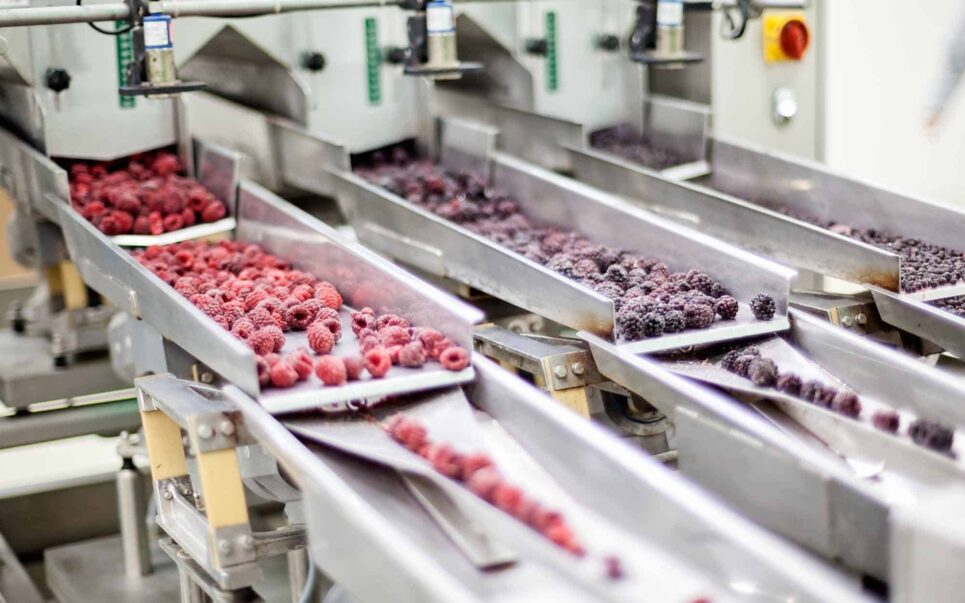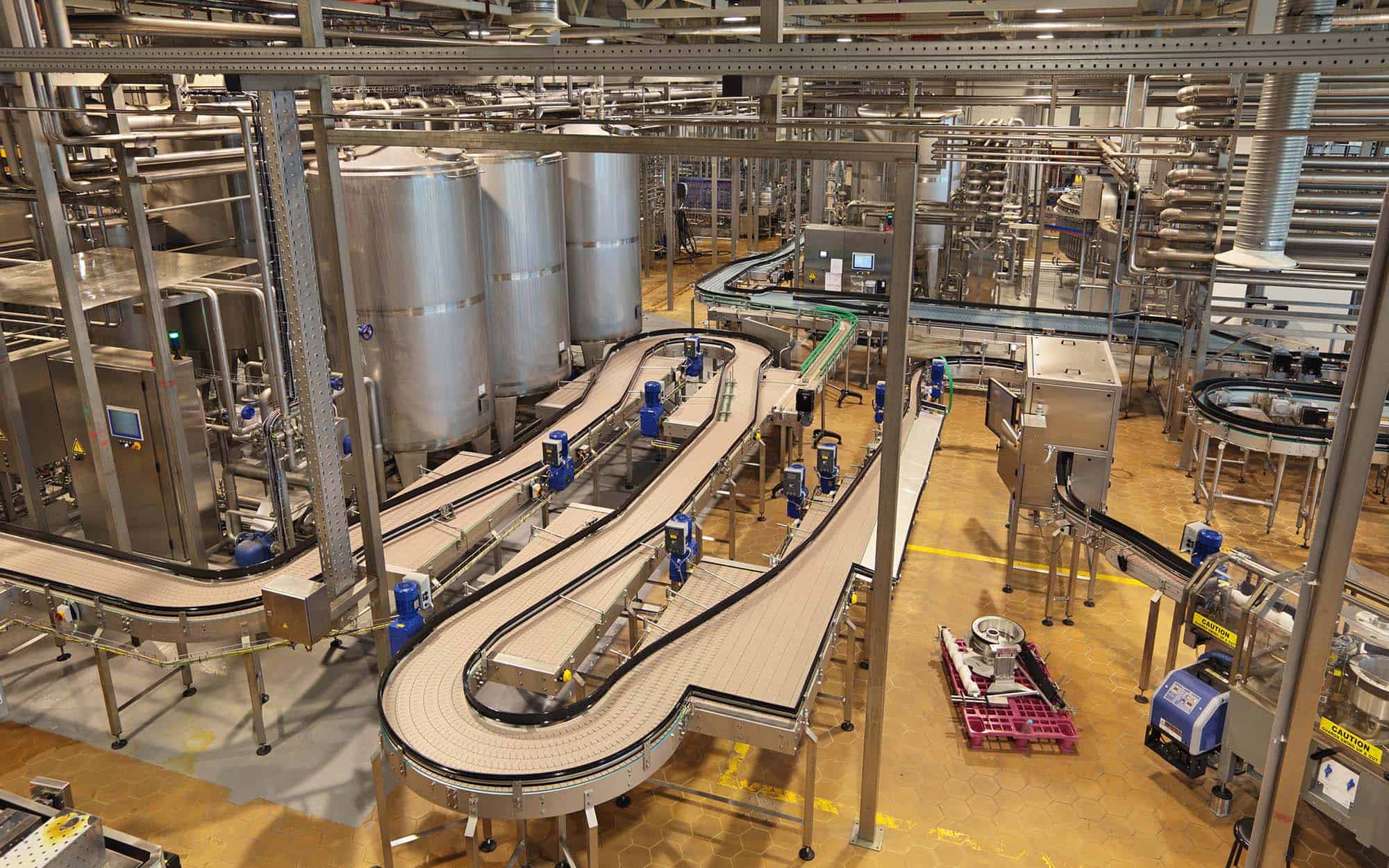5 Key HACCP Principles Food Manufacturers Should Know About

HACCP stands for Hazard Analysis at Critical Control Points, which is a federal program focused on ensuring food safety from harvest to consumption.
With the goal of protecting consumers from food contamination, the FDA lists five critical stages which they recommend including in development of HACCP plans. So, let’s explore each key HACCP principle and evaluate how they relate to the food processing industry.
Principle 1: Conduct a Hazard Analysis
The first HACCP principle aims to analyze potential threats—it’s called hazard analysis. This is when the HACCP-Certified inspection teams assess factors in the food production chain that may cause injury or illness if not controlled.
When conducting a hazard analysis, safety concerns must be in a completely different category than the quality concerns of your product. In the HACCP’s eyes, hazards are “a biological, chemical, or physical agent that is reasonably likely to cause illness or injury in the absence of its control.”
Simply put, a hazard is any sort of safety issue occuring during the food packaging, processing, or distribution stages.
The HACCP conducts hazard analysis in two main phases. The first, identifying hazards, can be regarded as a “brainstorming” session. During this stage, the inspection team reviews the:
- Ingredients used in food products
- Activities conducted at in each step of the chain
- Equipment used during food processing
- Final food product, and its method of storage, distribution, and intended use
After compiling a list of potential hazards, stage two begins, and the evaluation starts. During this stage, each potential threat is assessed based on:
- Severity: This refers to the seriousness of exposure to the potential hazard in question, like metal fragments contaminating your processing line. As a general rule of thumb, considerations of severity include the magnitude and duration of illnesses or injuries.
- Occurrence: This refers to how likely a hazard is to happen. Consideration for these factors are based upon a combination of past experiences, previous studies, epidemiological data, and information in technical literature.
Looking to keep your processing operations safe for consumers? Want to learn how to set up a HACCP Plan? Don’t worry. Magnattack® is here to help. As an HACCP Internationally Certified organization, we offer plant risk assessments to help you stay ahead of hazards.
Principle 2: Determine Critical Control Points (CCPs)
After all potential hazards are assessed, the second HACCP principle begins: determining critical control points (CCPs). According to the FDA, “a critical control point is defined as a step at which control can be applied, and is essential to prevent or eliminate a food safety hazard, or reduce it to an acceptable level.”
Basically, a CCP is any stage in the food supply chain where implementing safety measures could have potential to improve the health effects of the end product.
If that sounds vague, well, that’s because it is. However, HACCP made it an open-ended definition by design, as several different aspects of food processing could benefit from CCPs, including:
- Thermal processing or chilling
- Testing ingredients for chemical residues
- Product formulation control
- Testing food products for metal contaminants
It’s important to note CCPs are unique based on each manufacturer’s production process. For example, two separate facilities, both of whom are preparing the same food item, could have vastly different control points. This disparity is due to differences in each facility’s layout, equipment, ingredients, and processing systems.
Principle 3: Establish Critical Limits
Once the HACCP identifies hazards and effective control points to combat them, the third principle comes into play—establishing critical limits.
A critical limit is a maximum or minimum value of which health concerns should be prevented, eliminated, or reduced to an acceptable level.
Basically, a critical limit distinguishes between safe and unsafe operating conditions at a specific CCP. Critical limits may be based upon several factors in the food processing chain, such as:
- Temperature
- Time
- Physical dimensions
- Humidity
- Moisture level
- Water activity
- pH Balance
- Titratable acidity
- Salt concentration
- Available chlorine
- Product viscosity
- Preservatives
- Sensory information (aroma, visual appearance)
Generally speaking, each CCP has one or more control measures that make sure any hazards are properly identified and resolved.

Principle 4: Establish Monitoring Procedures
Following the implementation of control actions, the fourth HACCP principle takes hold and establishes monitoring procedures. Essentially, this is a planned sequence of observations or measurements that assess whether a CCP is under control. For food processors and the FDA alike, monitoring serves three main functions.
First, monitoring is an essential aspect of food safety management because it facilitates tracking of daily operations. For example, if there’s indications signaling a loss of control, then it’s far easier for food processors to take action before a deviation from a critical limit occurs.
Secondly, consistent monitoring helps determine when hazards occur at a CCP. If by chance, a control deviation occurs, corrective action should be implemented to resolve the problem.
Lastly, monitoring provides written documentation for proof in verification, equipment validation, and federal inspections.
Principle 5: Establish Corrective Actions
The HACCP system for food safety management was designed for two key reasons:
- Identifying health hazards
- Establishing strategies to prevent, eliminate, or reduce their occurrence.
If you’ve ever heard of Murphy’s Law, chances are you’re familiar with the adage “anything that can go wrong will go wrong,” and unfortunately—this applies to the food processing industry all too well.
Whether metal fragments contaminate food, equipment breaks into the packaging line, or separators become demagnetized, it’s nearly guaranteed you’ll experience some type of safety hazard.
That’s why the last HACCP principle revolves around corrective actions. Where there’s a deviation from established critical limits, you should:
- Determine and correct the cause of noncompliance
- Determine the disposition of the noncompliant products
- Record the corrective actions that need to be taken
As a helpful tip, to avoid potential headaches down the road, develop corrective actions in advance for each CCP, and include them in your HACCP plan.
Keep Your Critical Control Points Hazard-Free With Magnattack®
Let’s face it, keeping your food safe for consumers is a big responsibility. With so much riding on the health of your products, establishing unique HACCP principles—and carrying them out—can seem like a daunting task. But here’s the secret: with the right provider, it’s easy.
Enter Magnattack®. As a HACCP Internationally Certified organization, we offer plant risk assessments to keep your processing operations safe and, most importantly, customers healthy. Schedule a free consultation to get started, and discover the difference that comes with an expert’s approach.